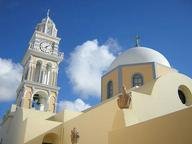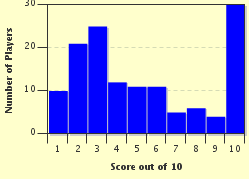Quiz Answer Key and Fun Facts
1. One of the very firsts civilizations in Europe was the one that evolved in the Cyclades. The most important cradle of that civilization is the settlement of Akrotiri. On which island is it located?
2. After the decline of the Cyclades Civilization, the Minoans had the upper hand in the Aegean Sea. They developed one of the earliest writing systems, the Linear A, which has remained undecipherable. One archaeological object that contains Linear A signs is a disc. What is its name?
3. The Mycenaean civilization is often said to be the first significant European one. In what geographical division of Greece is the site of Mycenae situated?
4. What is the name of the second largest Ionian island, which is referred to by Homer in the "Odyssey" as Scheria?
5. One of the most pivotal battles of the Persian Wars was the Battle of Salamis, where Themistocles led the Greeks to an overwhelming victory against the Persians. In what gulf is Salamis Island located?
6. The renowned poet Sappho hailed from the island of Lesbos. By what other name is the island known?
7. Nicephorus II Phocas was one of the most significant Emperors of Byzantium. Before his coronation, he was an army general. One of his most brilliant achievements was the siege and occupation of Chandax. How is that city known today?
8. The Battle of Lepanto, fought in 1571, proved decisive in stopping the expansion of the Ottoman Empire in Europe. The battle was fought close to a Greek seaport in West Greece. Which one?
9. This city was besieged three times during the Greek War of Independence. In this city, the modern capital of Aetolia-Acarnania, Lord Byron died. What's the city's name?
10. We all know that Athens is the Greek capital, but from 1821 until 1834 what other city had that distinction?
Source: Author
DeepHistory
This quiz was reviewed by FunTrivia editor
Pagiedamon before going online.
Any errors found in FunTrivia content are routinely corrected through our feedback system.

